The Head of the Class
Headstocks on C. F. Martin Guitars
Many of the earliest Martin Guitars were made with headstocks in the shape of those used by Martin's mentor, Johann Stauffer.
"Stauffer" influenced Martin c. 1833

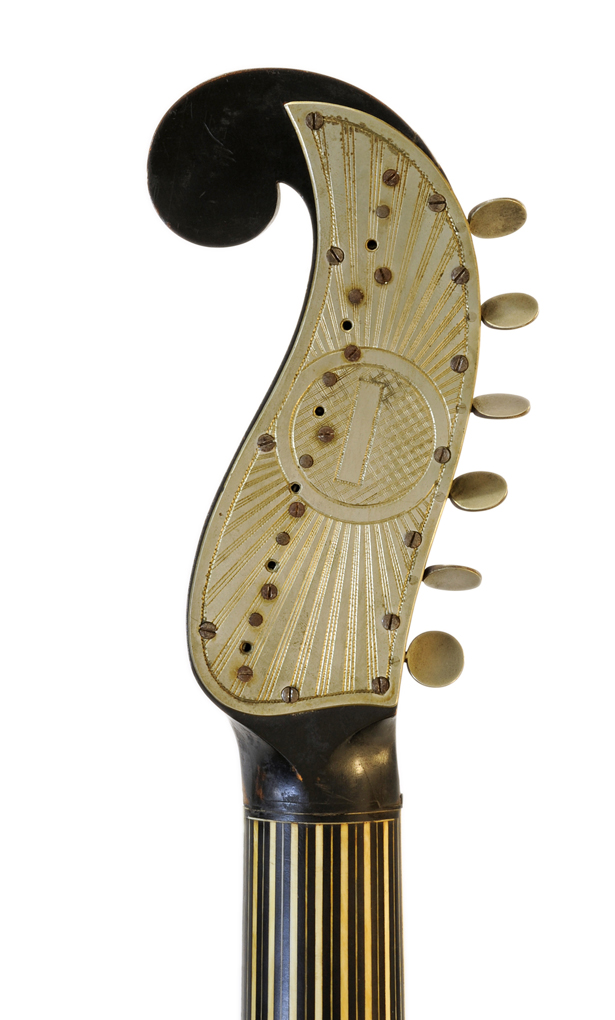
1837 Hudson Street Martin
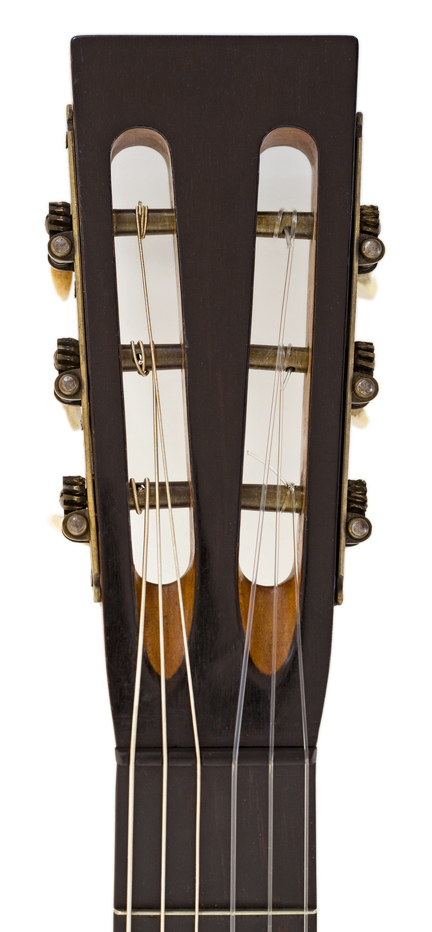
It has been assumed that all of the earliest Martins made in America were built with the Stauffer influenced headstock with "Viennese Gears", and so the headstock on this guitar was thought to have been replaced.
But we now know of several of the earliest Martins, this being one, with slotted headstocks, designed for gears, that appear to be original.
The near twin to this guitar, widely published, including on the cover of the "Chinery" book, with photos showing a "Stauffer Style" headstock which was previously thought to be original, in fact has a contemporary German Stauffer style headstock. While it would be easy to assume that the previous headstock was a "Stauffer Style" as well, we now know that the instrument previously had a slotted style headstock with gears.
We believe this may be an early headstock from France. Martin was an importer, and also obtained imported tuners from his fellow German-American contemporaries in New York. This set of tuners is probably from somewhat later. I haven't removed them yet to check screw holes for signs of originality or change.
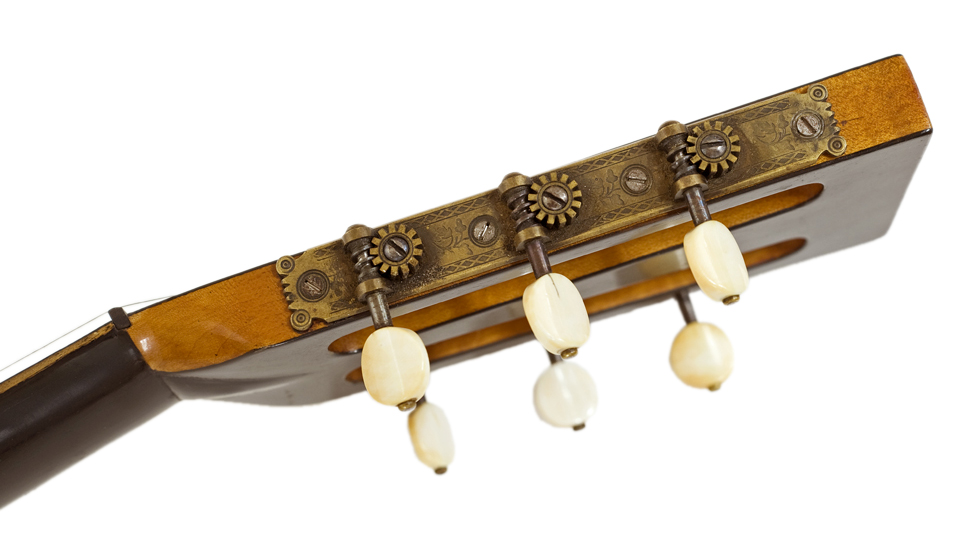
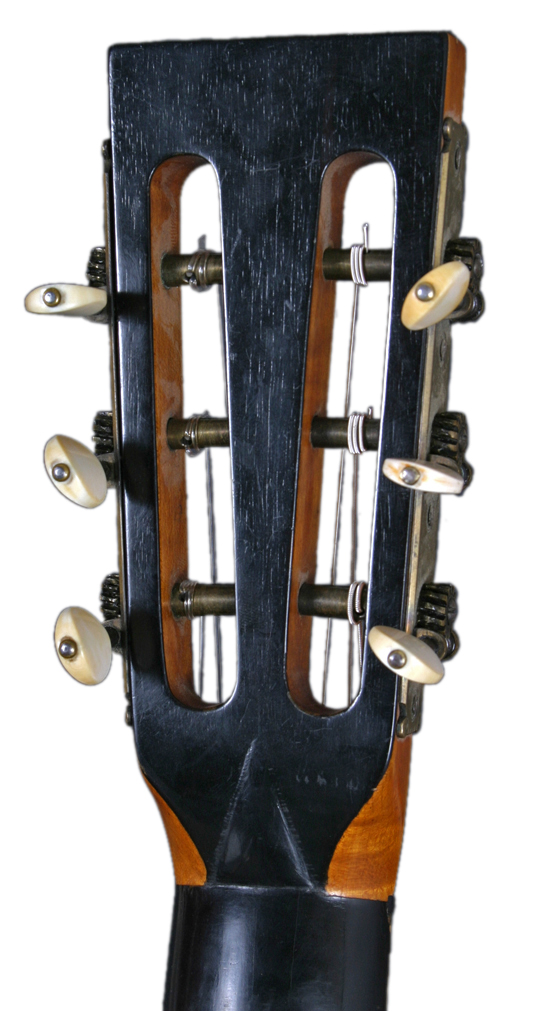
1840's Goncalo Alves Martin & Coupa
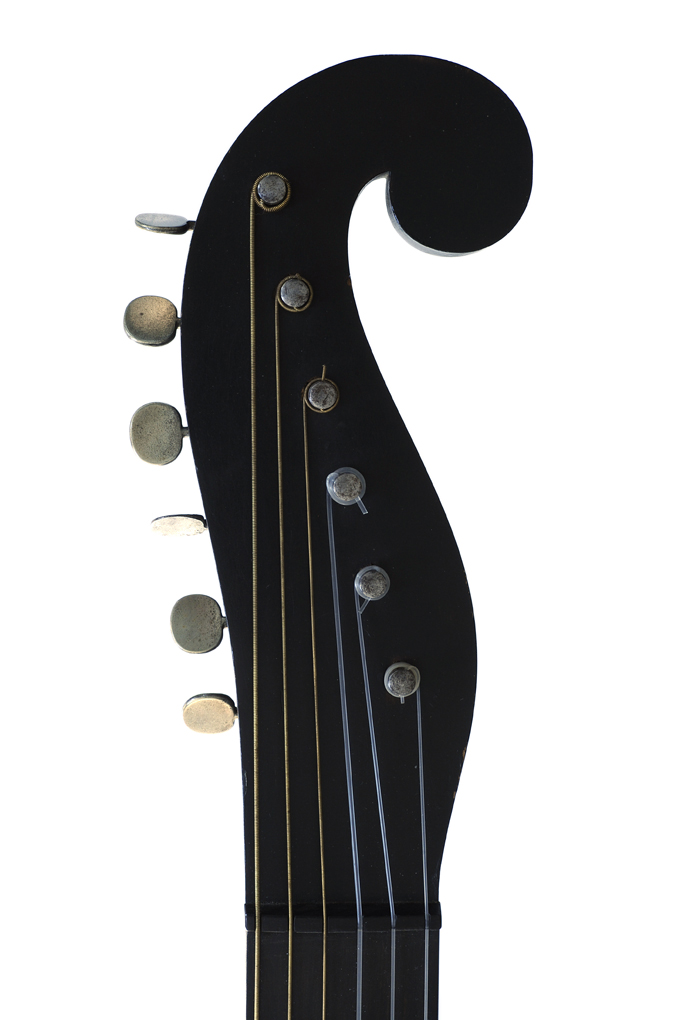
On this example you can see a horizontal line where the headstock is joined to the neck.
Note that each of the plates for Vienna gears has a unique and distinctive design, some graphic, some floral or taken from nature.
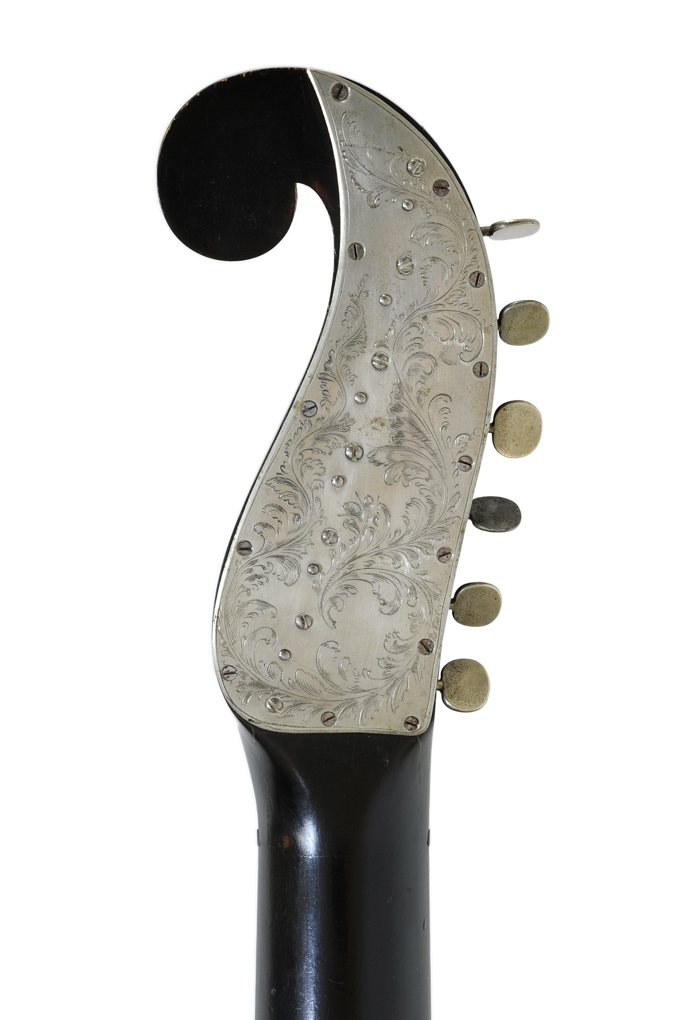
This early Martin & Coupa is an unusual example with Viennese Gears on a cedar neck with a volute, the dart which reinforces the joint between the headstock and the neck, which is usually seen on later guitars. It's also the only one I've seen without silver buttons.
1840's Spanish Style Martin & Coupa
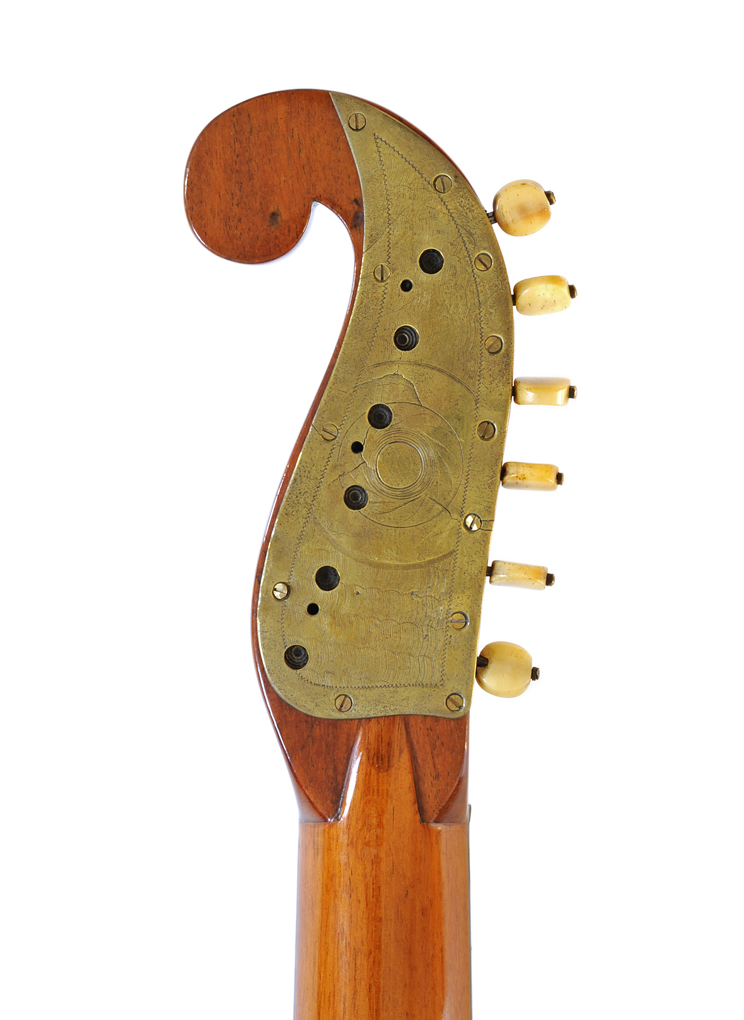
Schmidt & Maul Spanish
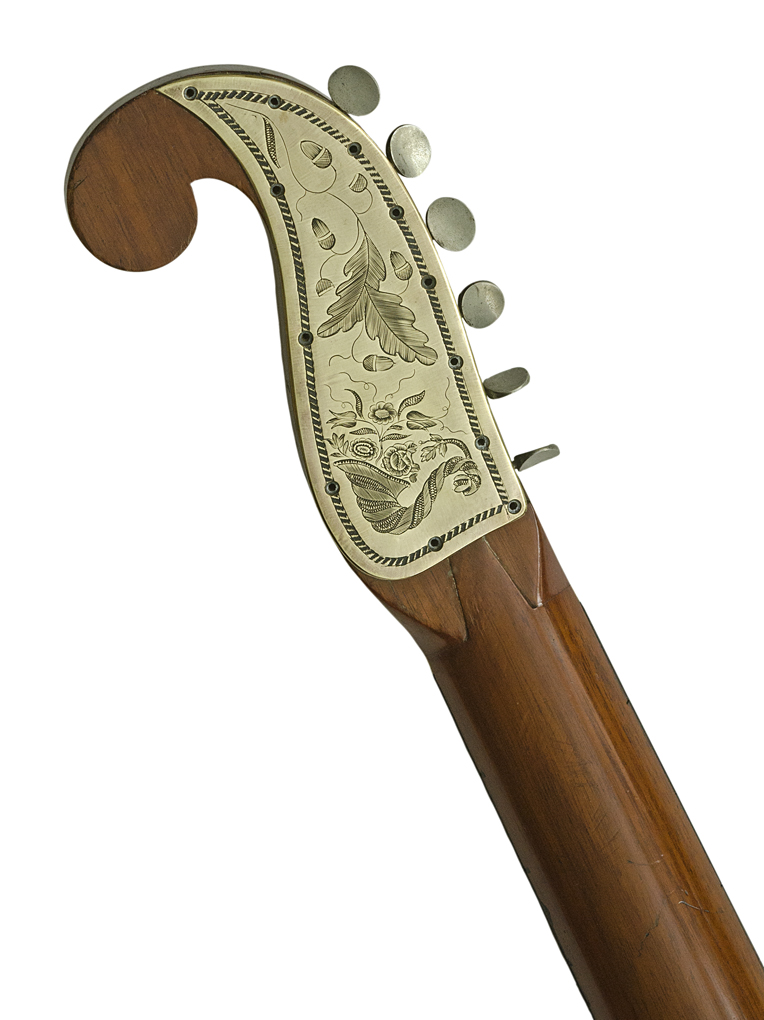
Martin & Schatz
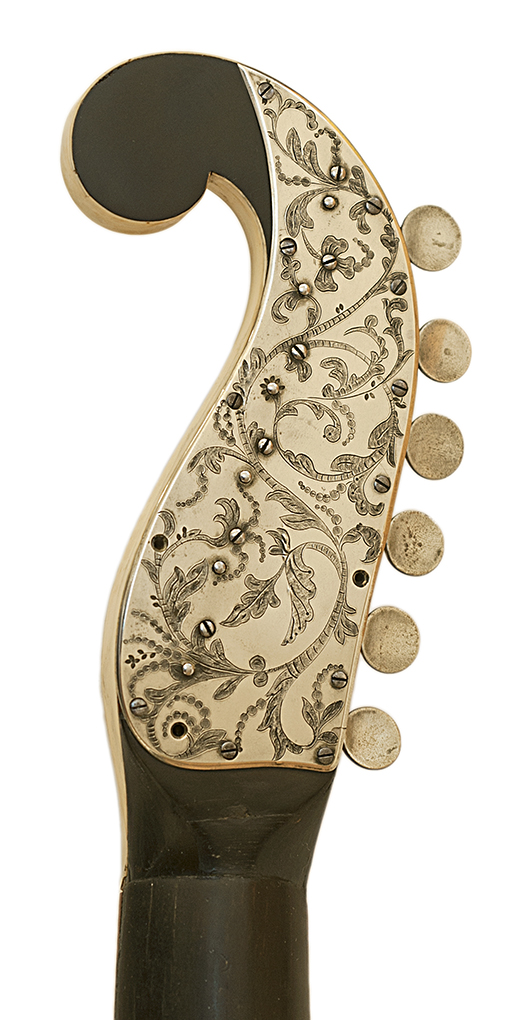
Early Martin guitars had a headstock that was separate from the neck and joined to the neck with a volute added for strength.
1850's Ivory Fingerboard Martin
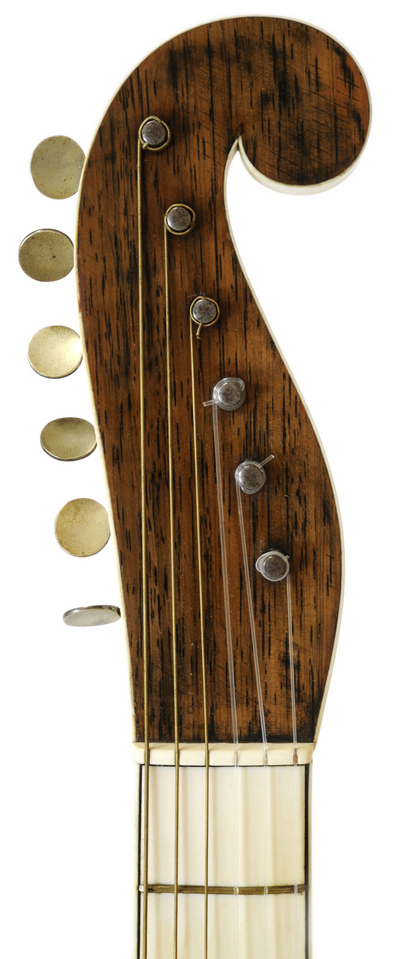
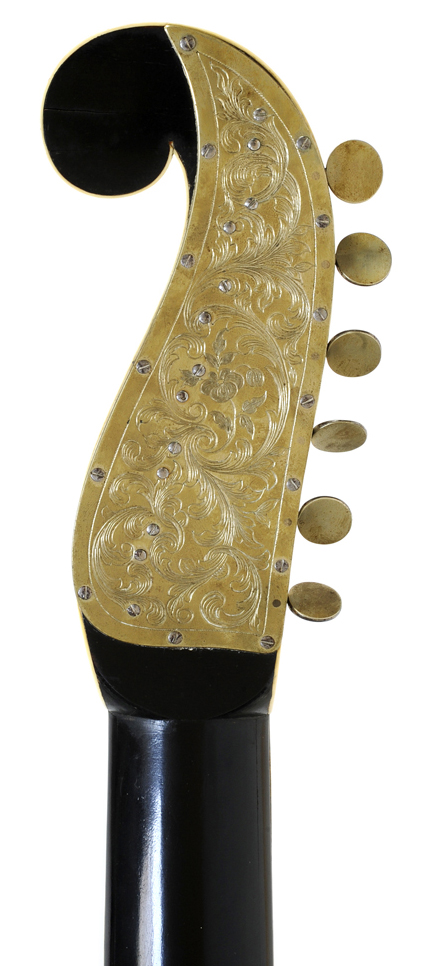
Spanish Size 1
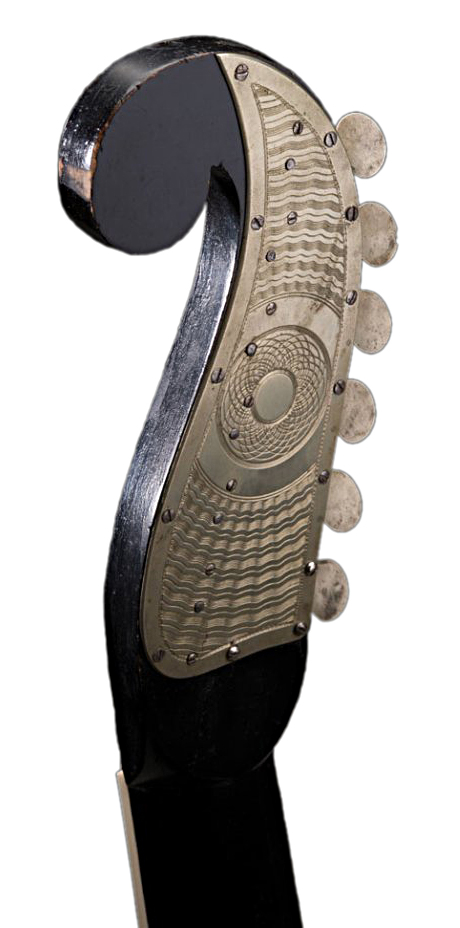
Martin started making guitars with solid headstocks and ivory pegs at least by the 1840's. For decades after, Martin produced most of their guitars with slotted headstocks with machines, but offered solid headstocks "with pegs" as an option.
The earliest solid headstocks were angular and wide, with small holes to attach ribbons for hanging.
1840's Spanish Style Martin
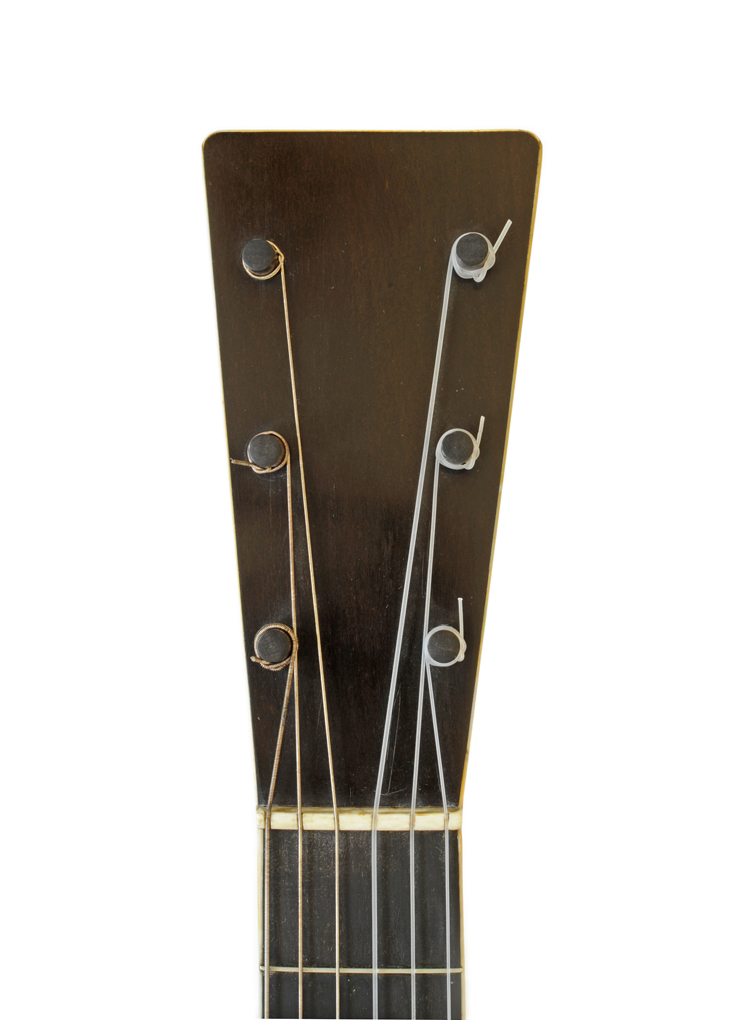
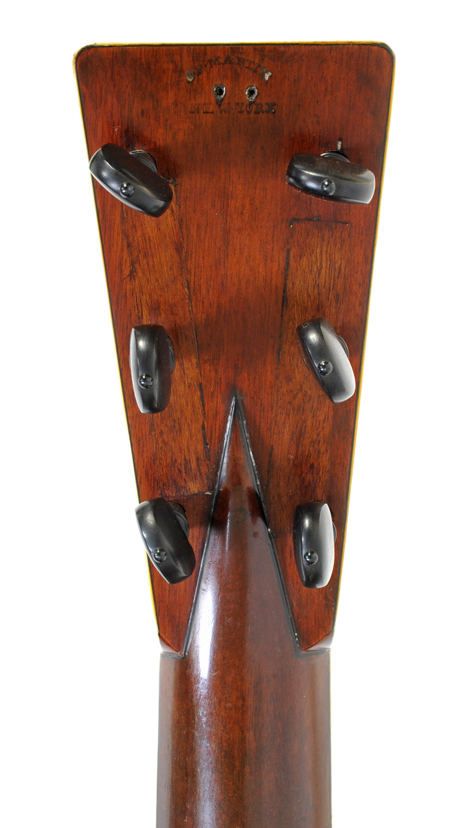
By the 1860's, the slotted headstock with "Jerome" machines was standard, with solid headstocks with pegs available on special order.
The earliest necks with slotted headstocks were "ebonized", or painted black, with "ice cream" style heels.
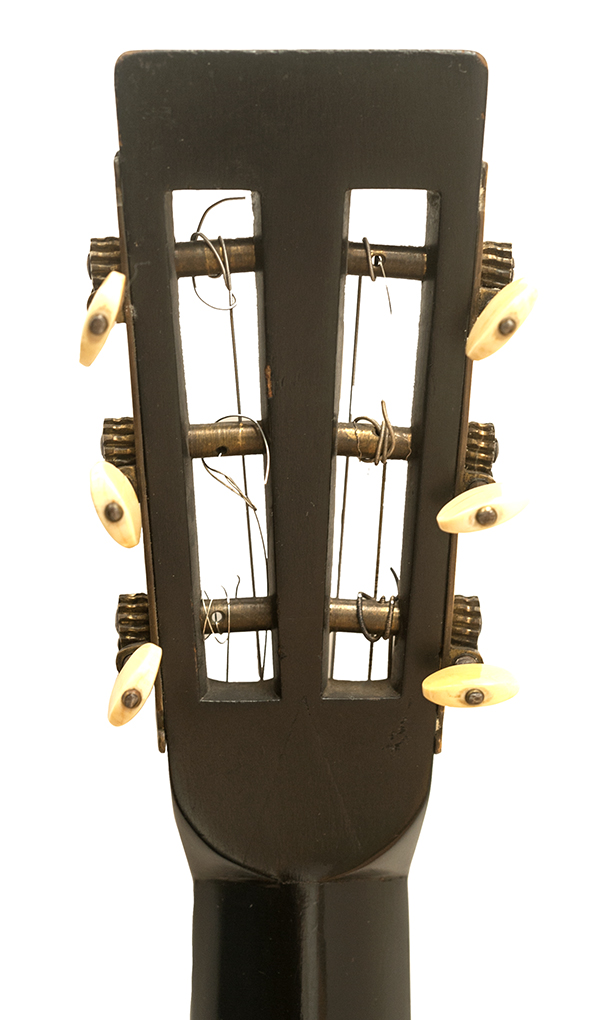
In the 1840's, three piece necks of cedar were introduced on Spanish Style guitars. Cedar neck Martins have a headstock attached with a volute at the headstock joint.
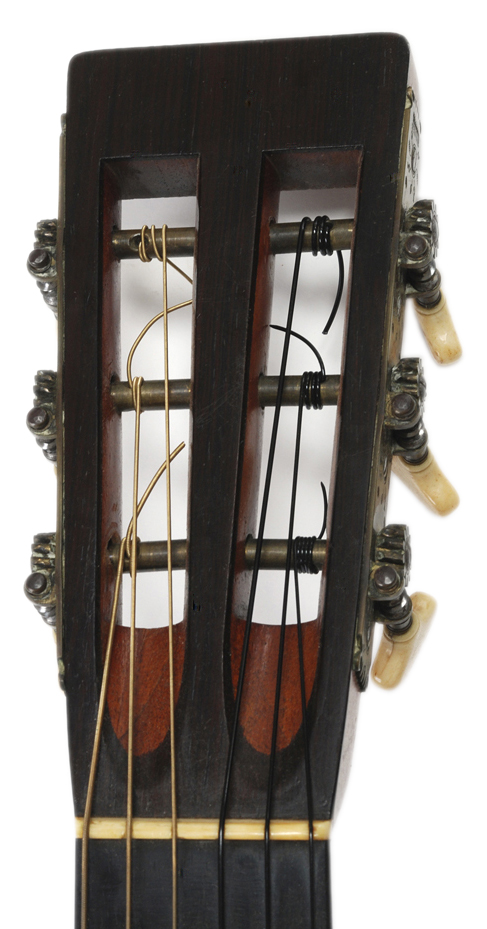
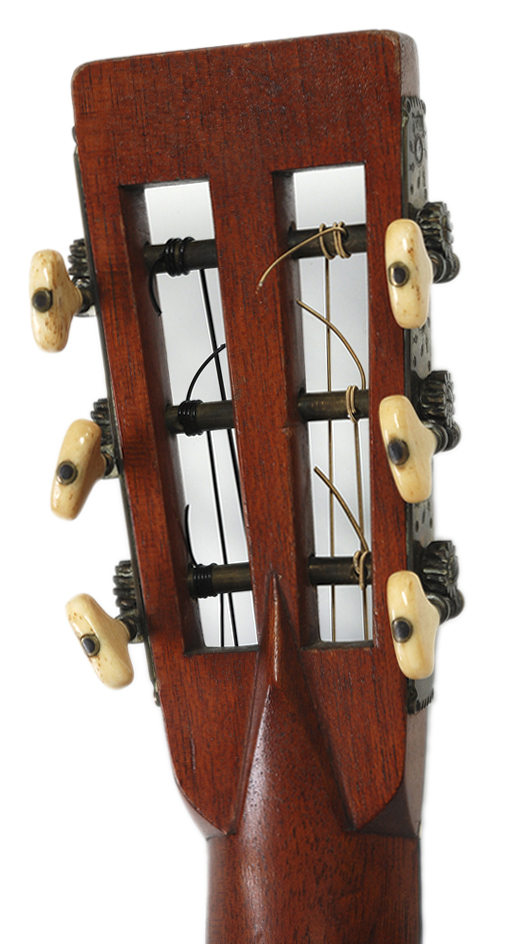
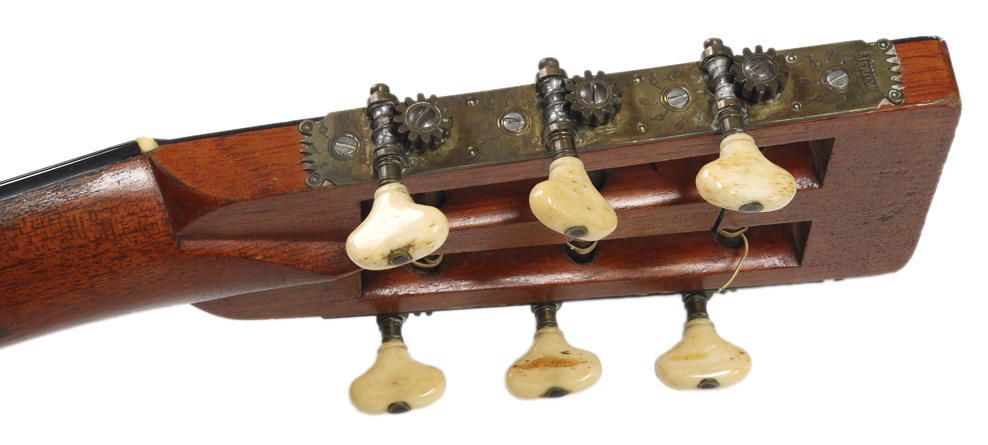
1896 Martin 0-42, "with pegs", with a Nazareth, PA stamp not usually seen until 1898.
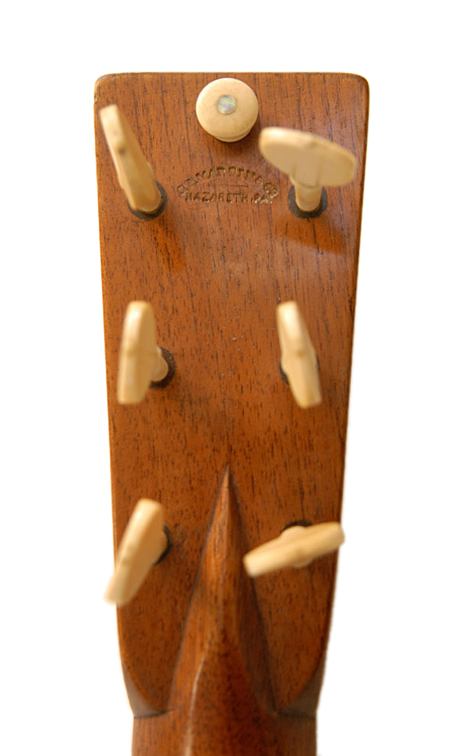
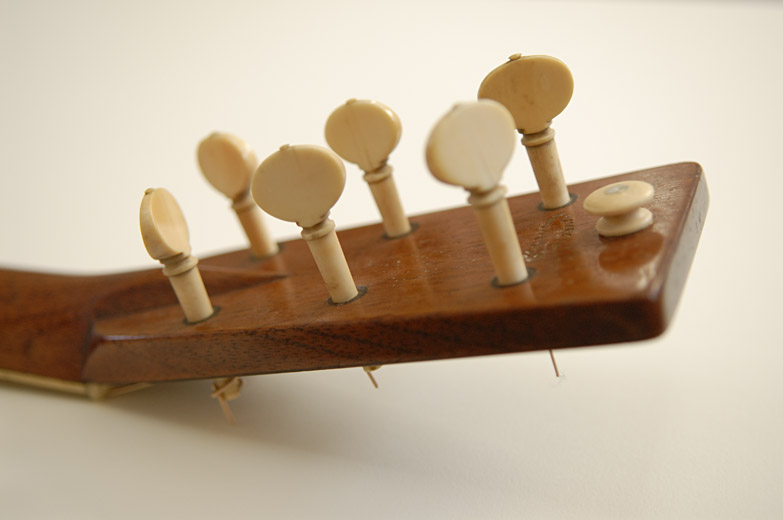
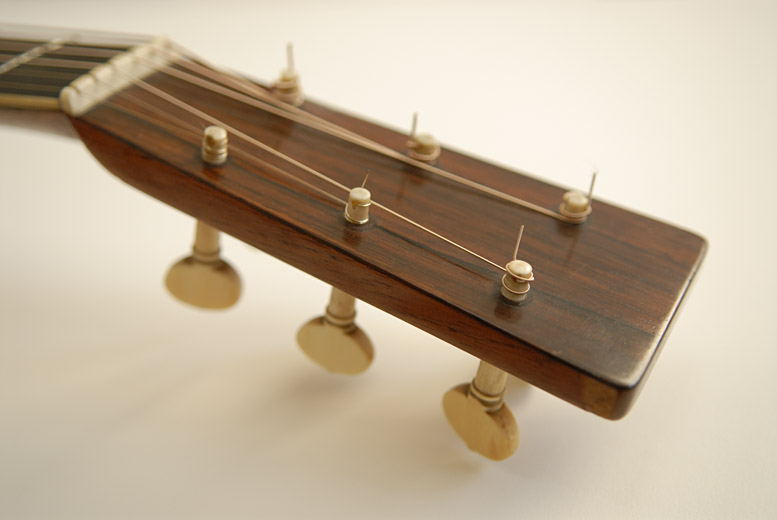
1907 1-21
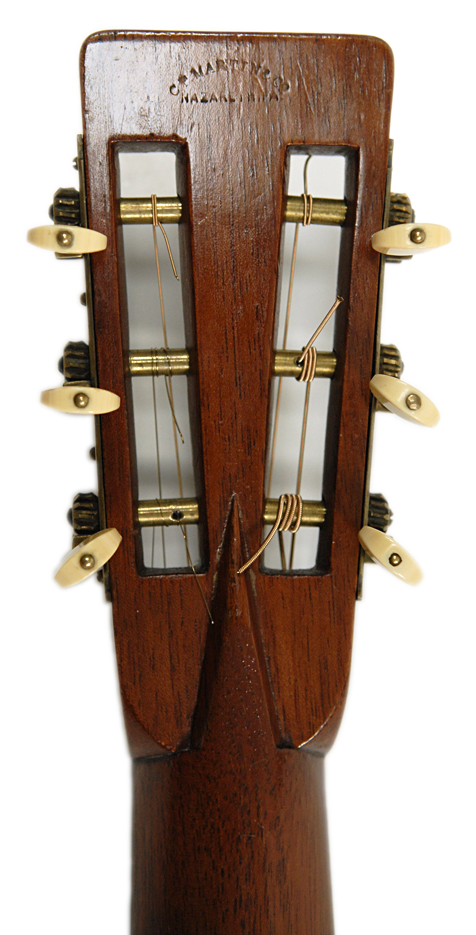
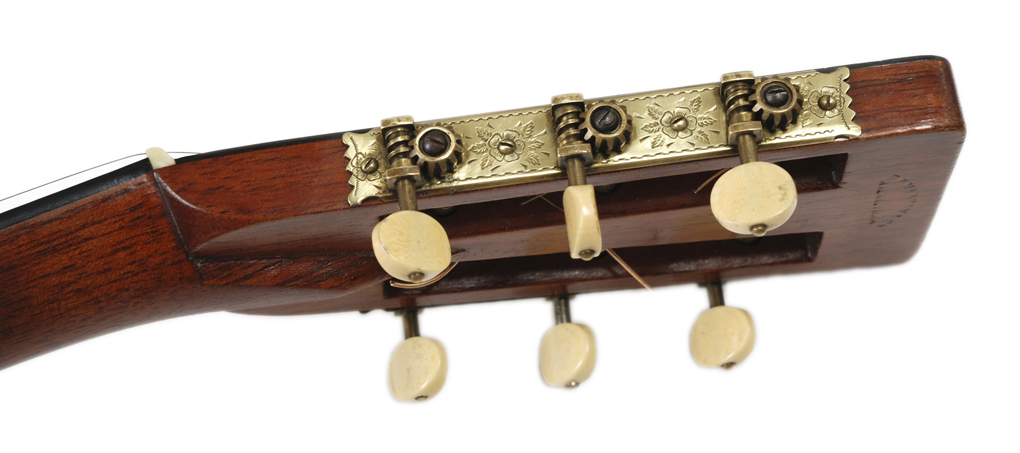
Martin 1902 000-21 10 String Guitar
Martin did not build many "Harp Guitars", as their competitors did near the run of the century, but in 1902, Martin did have orders for a handful of 10 string guitars. Martin extended the peghead to accommodate the extra tuners.
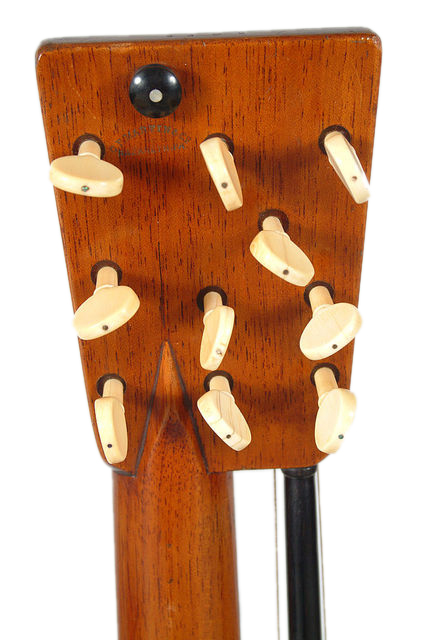
In about 1916, Martin started making their necks of mahogany rather than cedar. The greater strength of mahogany allowed Martin for the first time to make the neck and headstock of one piece of wood, eliminating the joining of the two. So the volute became unnecessary as a structural element. It was continued as an ornamental feature on the higher grade guitars, and eliminated on style 21 and below.
In 1919, Martin also began selling their less expensive guitars, style 21 and below, with rounded slots in the headstock. Previously, all Martins had square slots, a process that took extra time, which was in short supply as as Martin's production was doubling yearly. Curiously, these two guitars, two serial numbers away and both from the same batch made for the Southern California Music Company, have different style headstocks, which is not surprising if you follow Martin history. No doubt, the necks were made first, and different styles appeared when the worker reached into the pile when it came time to attach a neck.
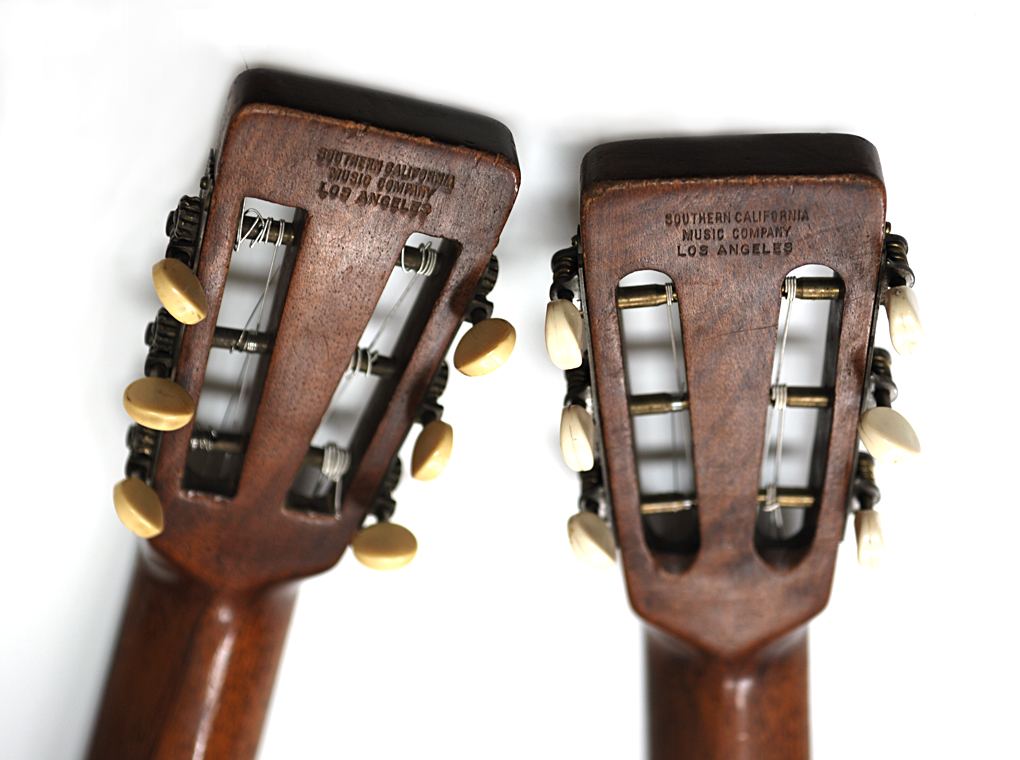
14003 and 14001
This 00-21 from 1928 is typical of Martins from the late 1920's, when a volute was no longer used on Style 21 and below.
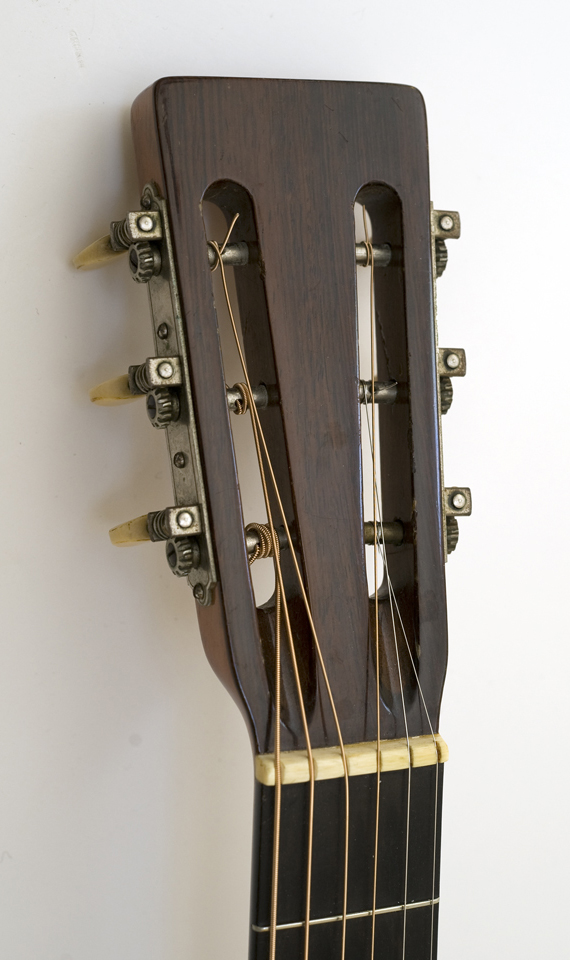
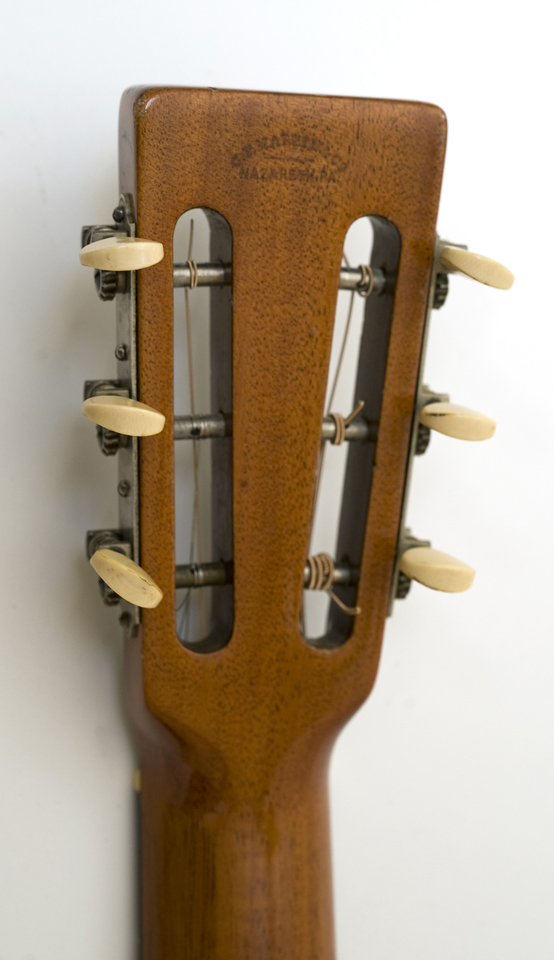
1939 D-28
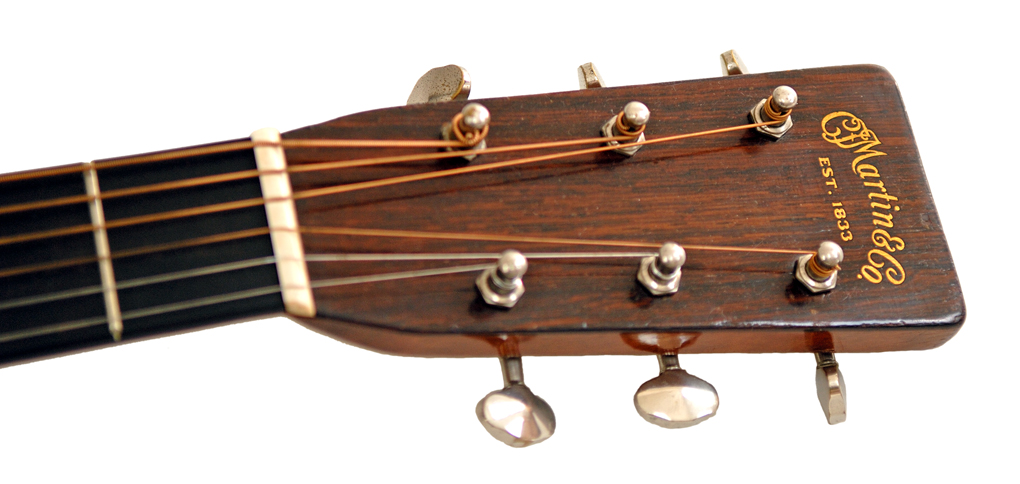
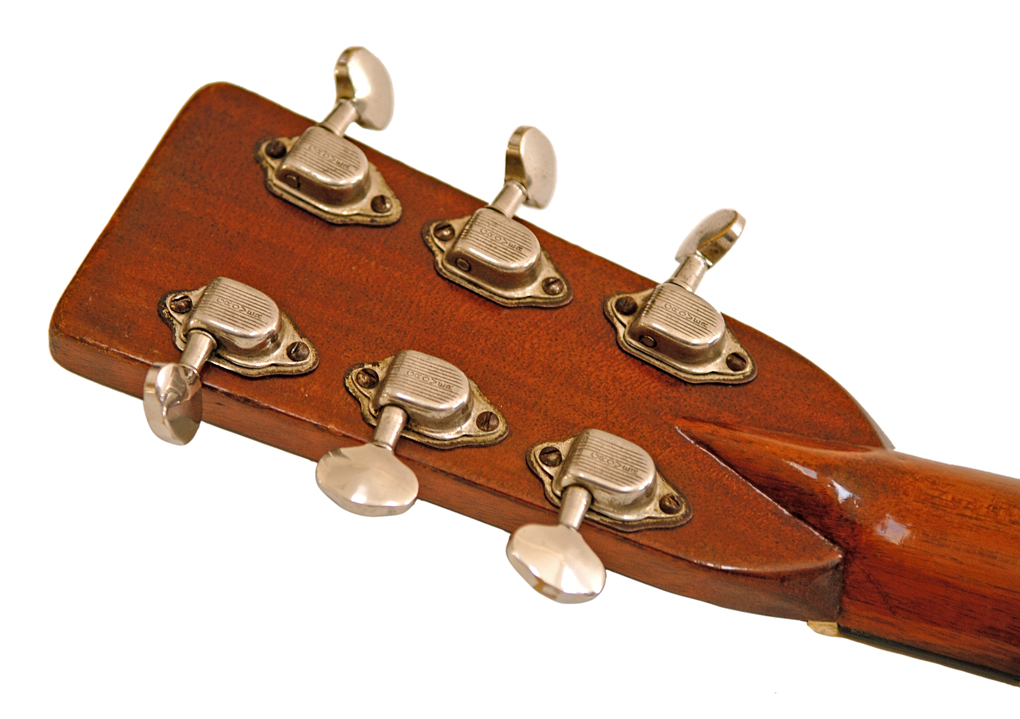
1944 D-18
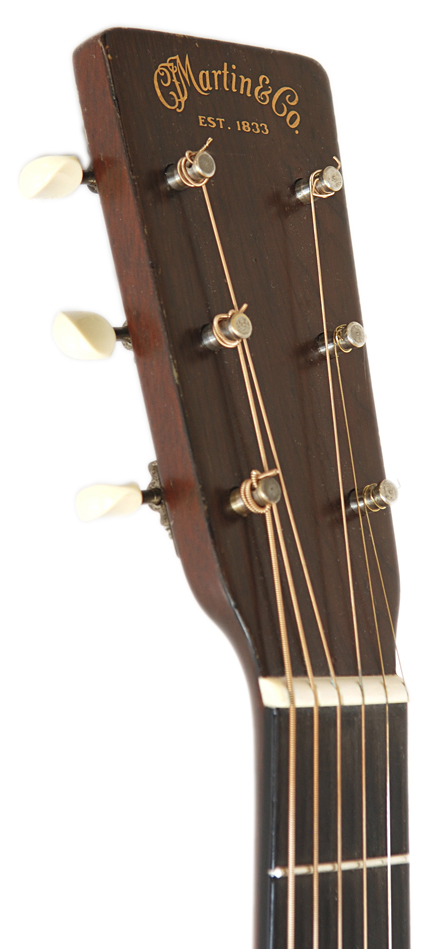

1952 000-18
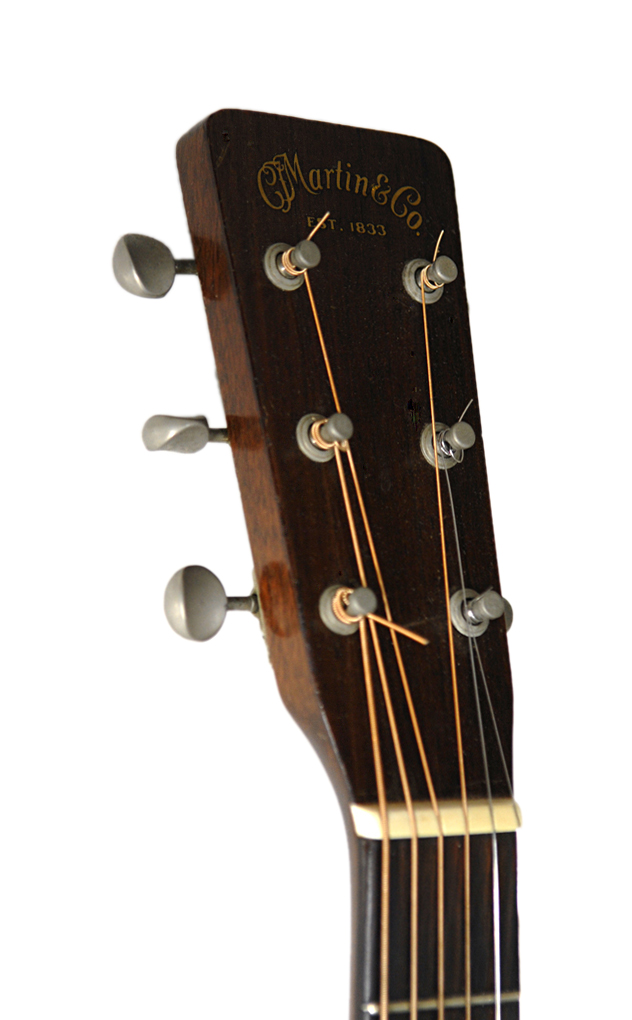
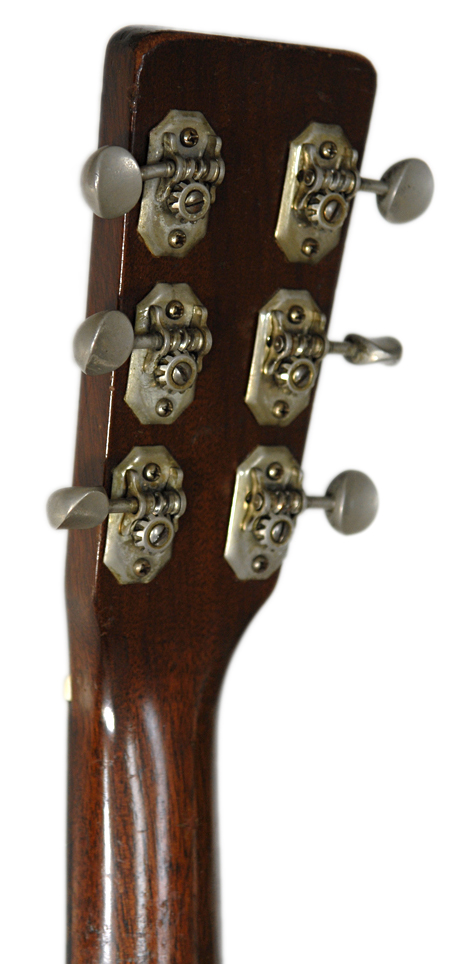
1962 000-18
Here you can see the more
rounded shape of the 1960's headstocks:
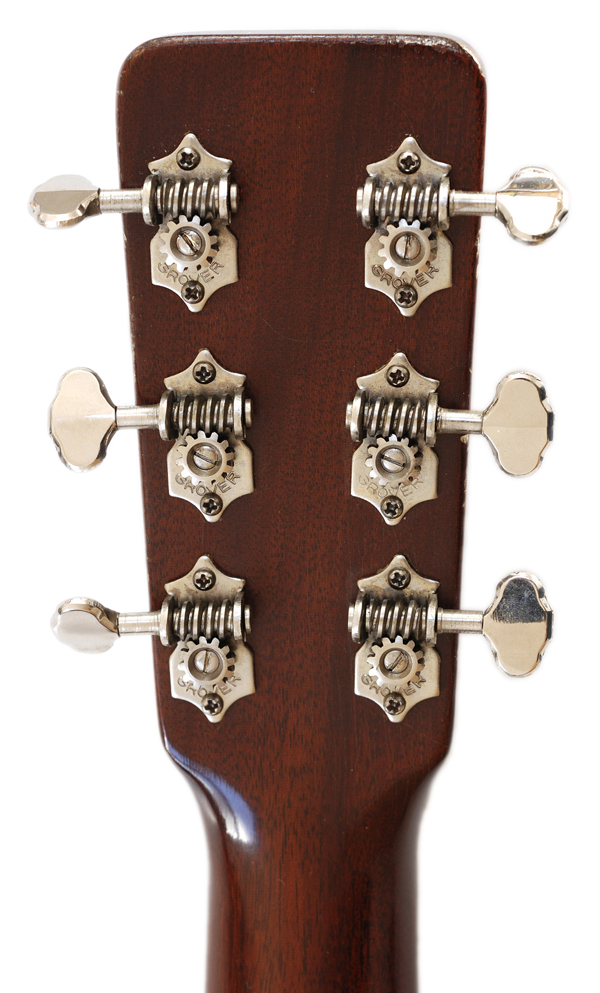

1966 D-35
The D-35 was a more expensive model than the D-28, but Martin chose to save money by eliminating the volute on the D-35.
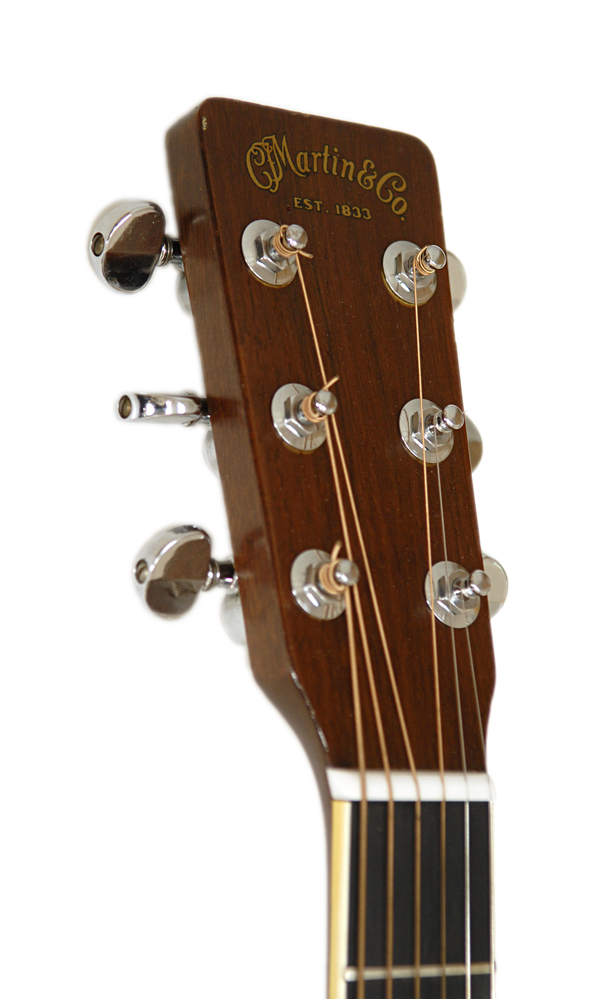
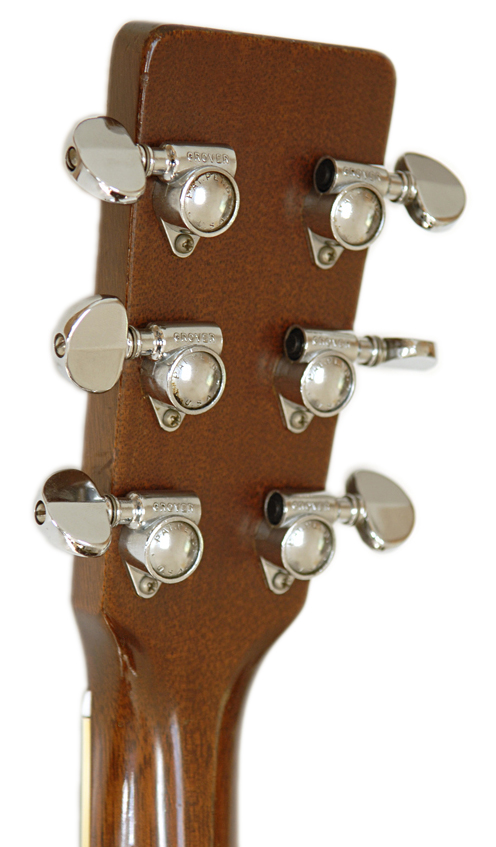
Martins Made for Others
1913 Foden Special
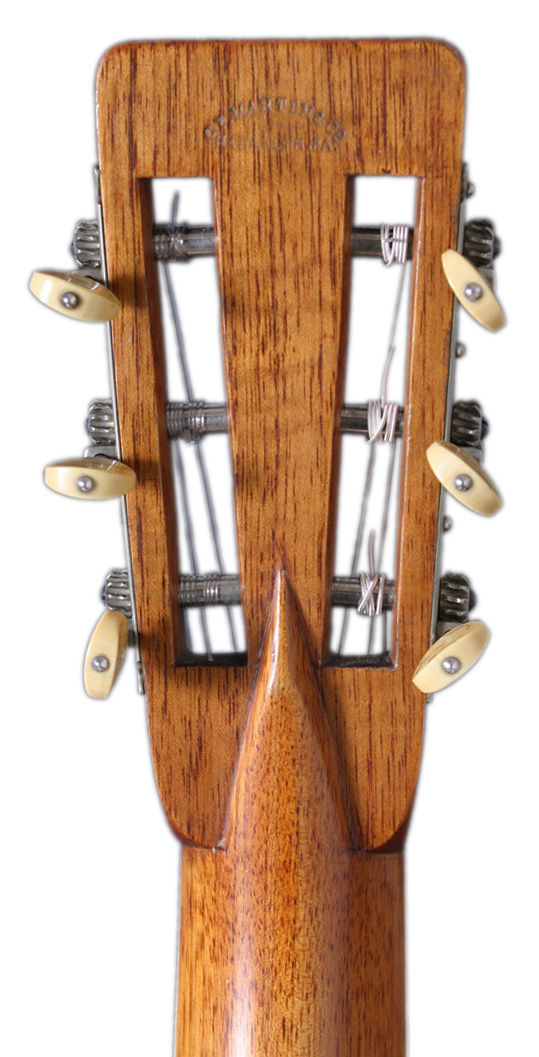
1916 Martin Ditson Style 22
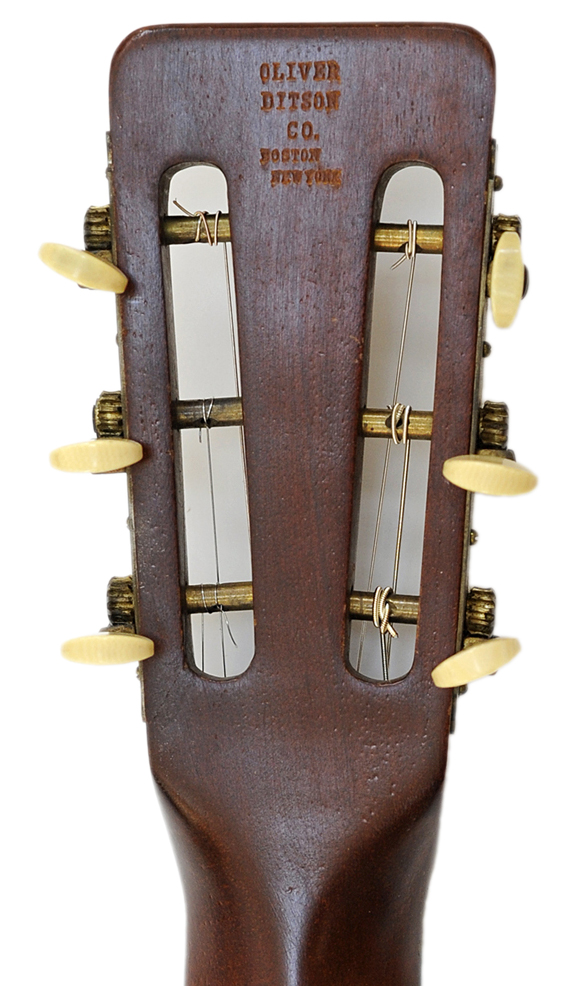
The Southern California Music Company chose to use the Nunes name for their earliest Hawaiian guitar because of the association of the Nunes name with Hawaiian music, and on the earliest versions the Martin name is nowhere to be seen.
This headstock is typical of Martin headstocks from the late teens, which have rounded corners generally associated with Martins of the 1960's.
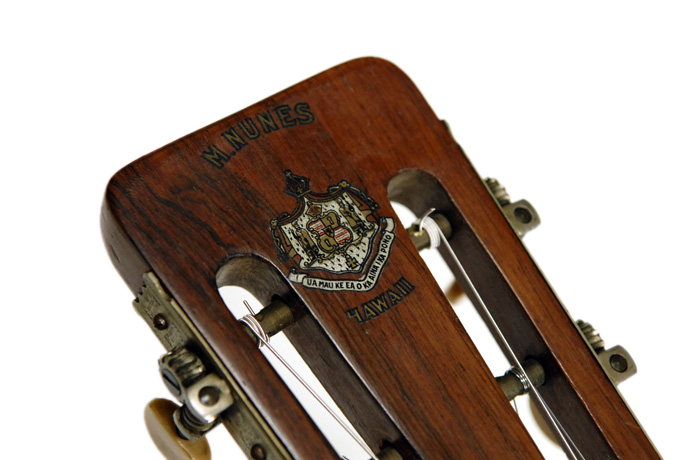
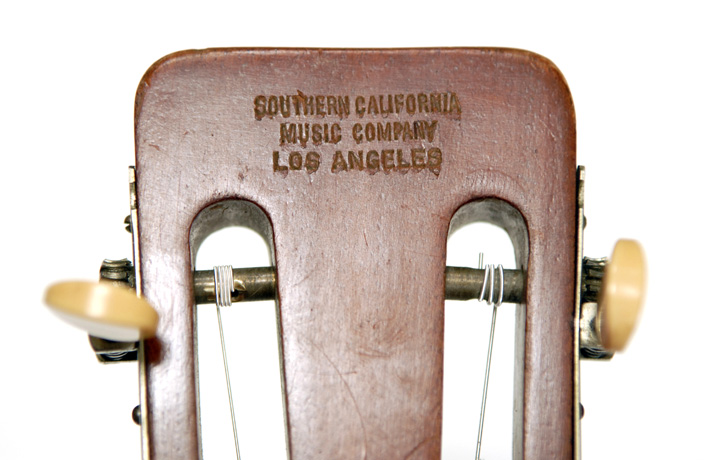
While most Martins made for the Wurlitzer stores in the 1920's have a Wurlitzer stamp on the headstock, some transitional examples have both Wurlitzer and Martin stamps.
1924 Martin Wurlitzer 2087 / 000-18
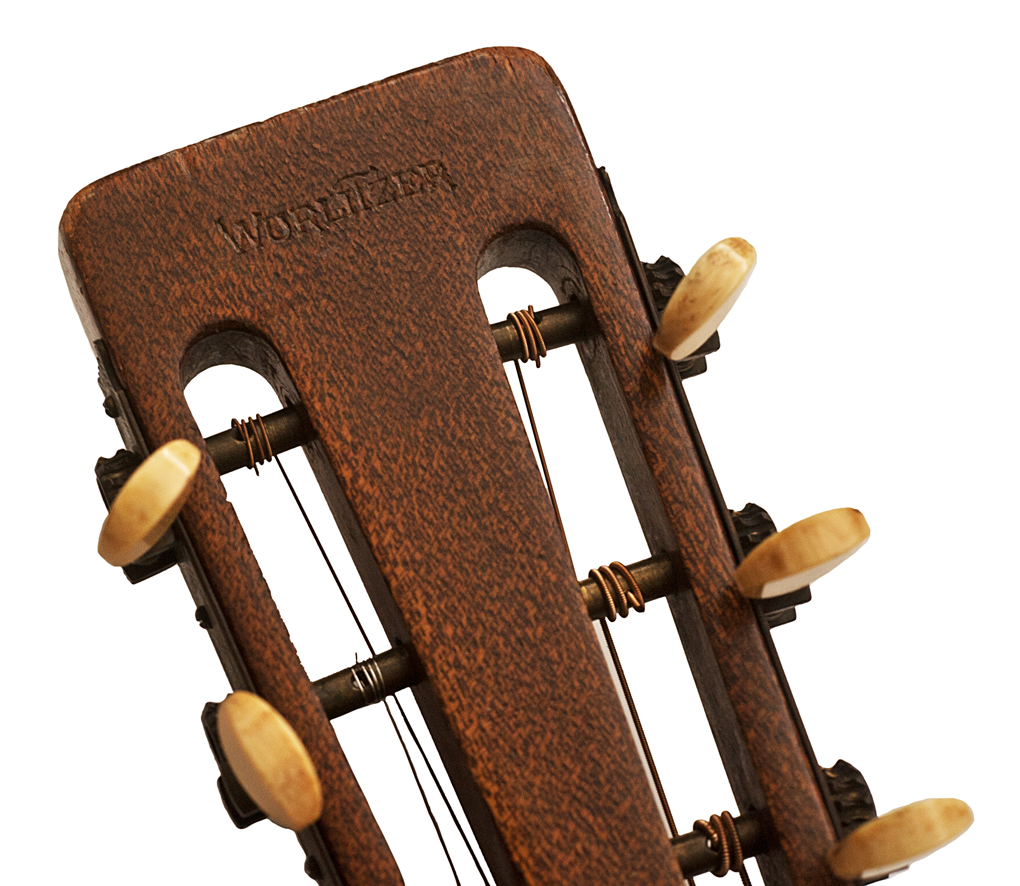
1922 Martin Wurlitzer 2092 / 0-42
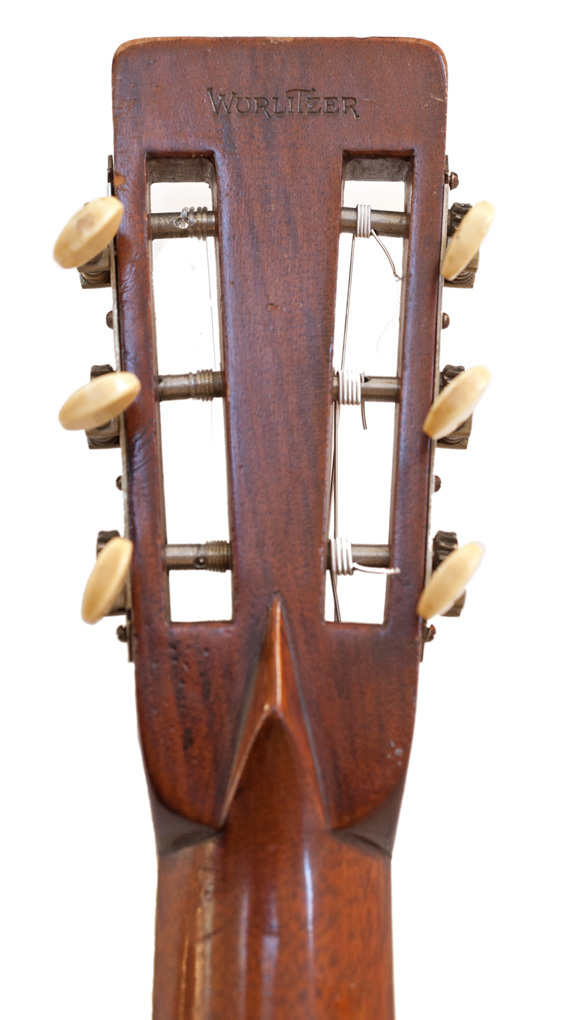
1922 Martin Wurlitzer Style 2092 / 0-42
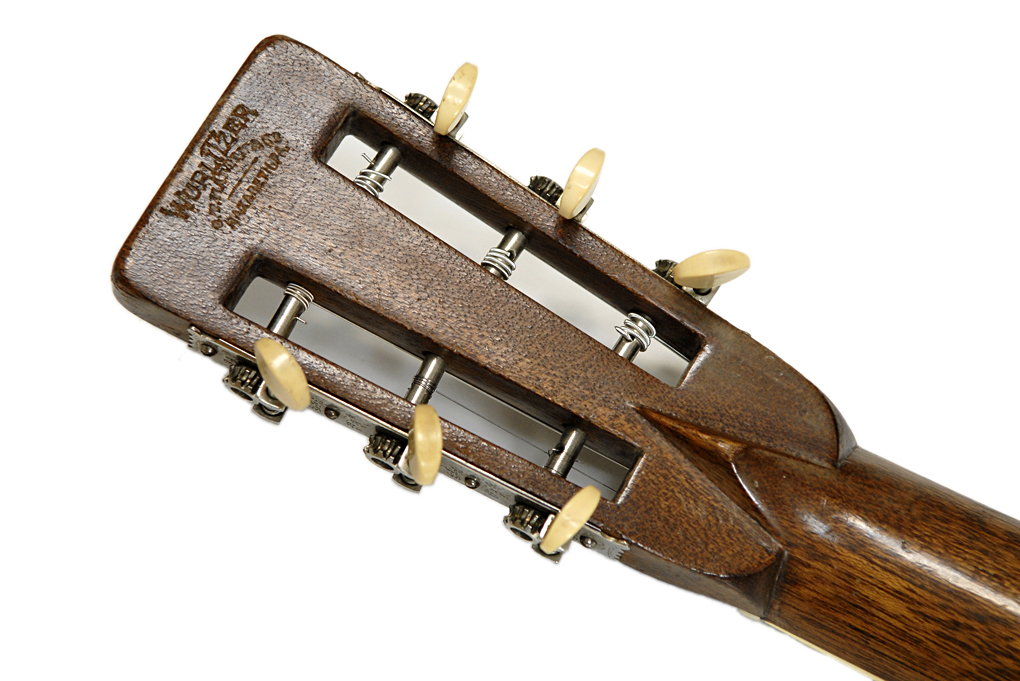
The Style 44 guitars ordered by the teacher Vadah Olcott-Bickford were made at her request of the finest materials, but without excessive ornamentation.
The first Olcott-Bickford guitars were made in 1913 with a three piece neck with separate solid headstock with ebony pegs. The Olcott-Bickford was made again in 1919 and every few years onwards to 1930. These would have been the first Martins built with the modern design of a one piece neck with a solid headstock.
1922 Martin Olcott-Bickford Style 0-44
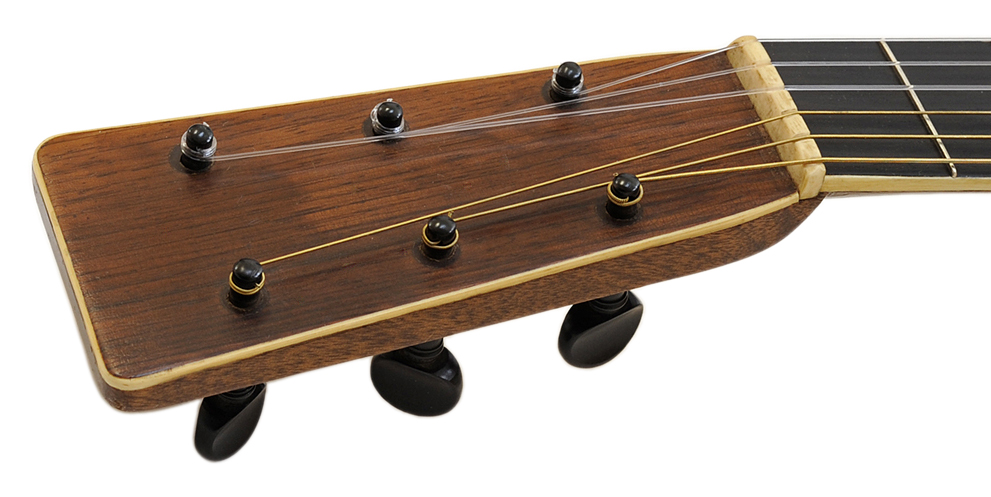
The headstock on the Paramount Style L was produced and provided to Martin by the Wm. Lange Company.
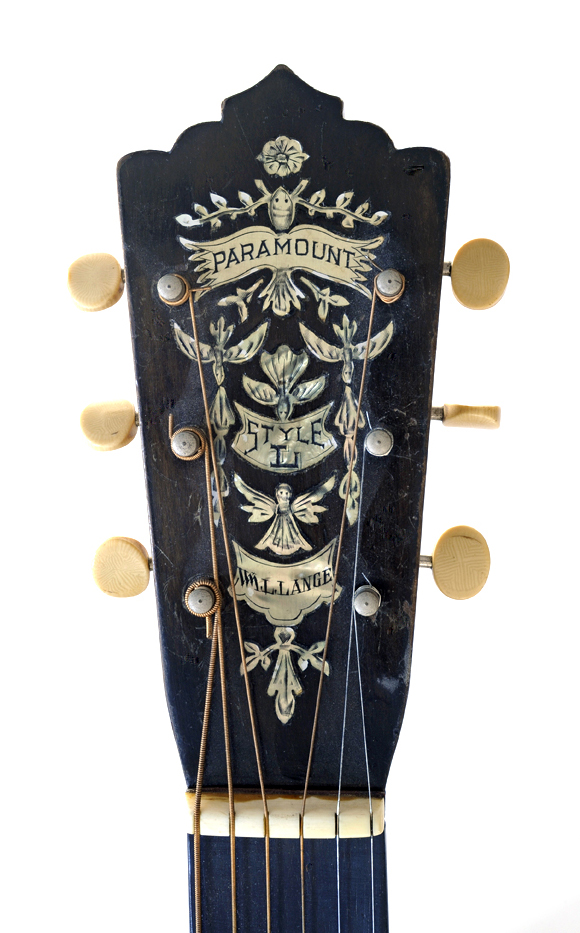
The Martin "Torch"
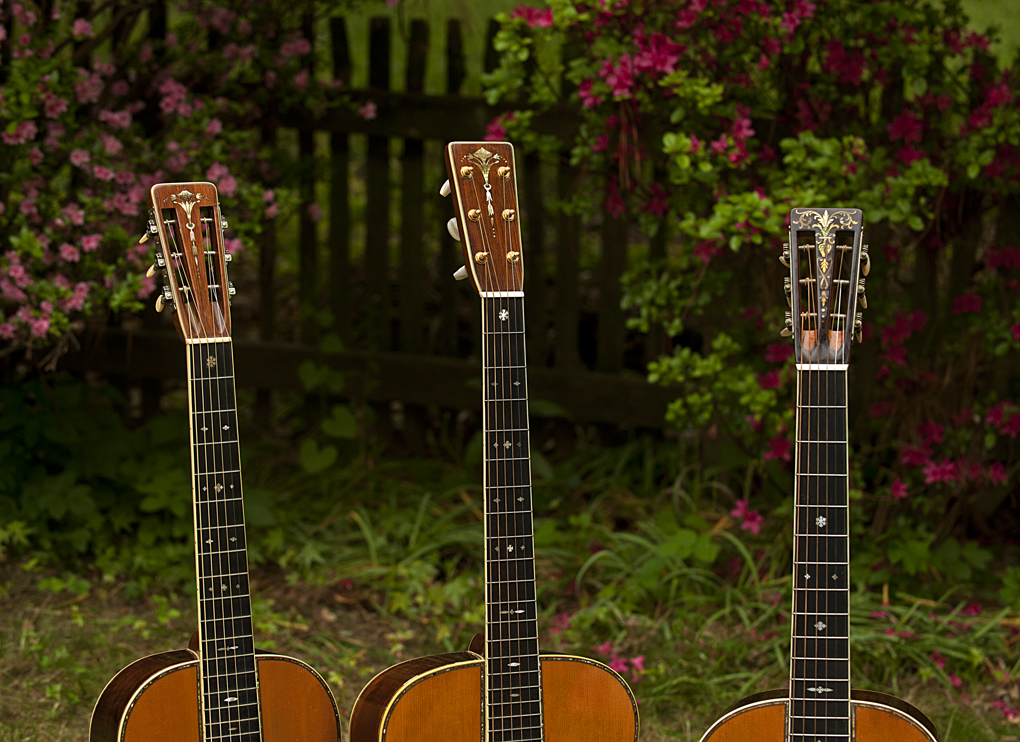
The first of the "Style 45" headstock inlays to appear on a Martin was seen in 1902 on #9372, the first 00-42S, to have pearl inlaid on the back and side borders. This version was known as the "fern".
This was followed by #9488, which had another version of the fern:
1902 Martin 00-42S
Serial #9488
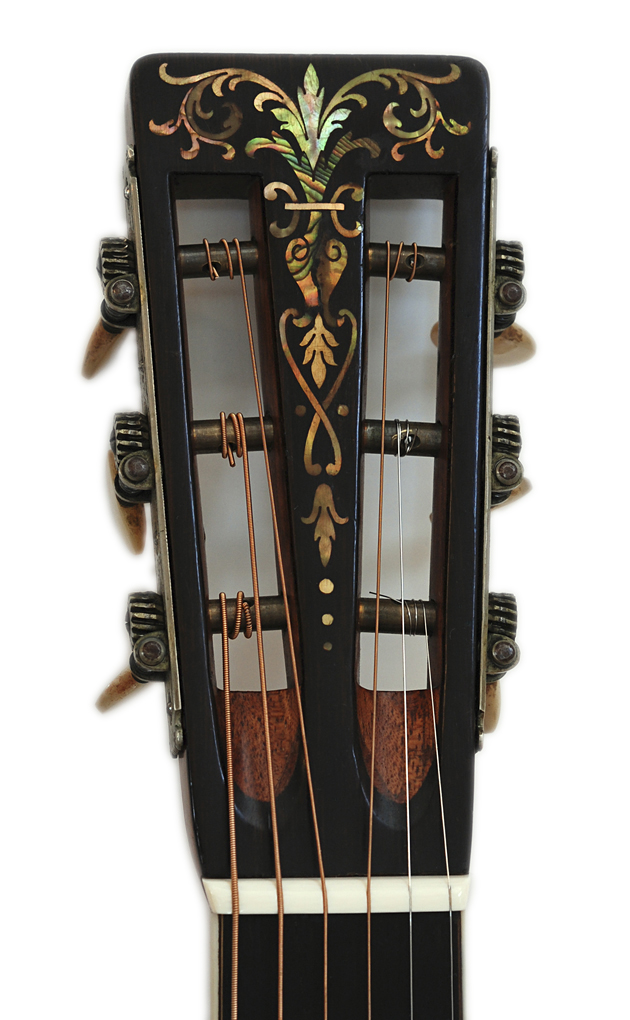
The first version of the "torch" or "fern" seen in 1902 was used on subsequent early examples, and became the standard when the Style 45 became a regularly cataloged item in 1904.
The design seen on #9488 was revived many years later for the 2004 "Bellezza Nerra" and other custom Martins, and became known as the "alternative torch."
By 1905, the fern was replaced by the first version of the "torch", sometimes also known as the "flowerpot"
1919 0-45
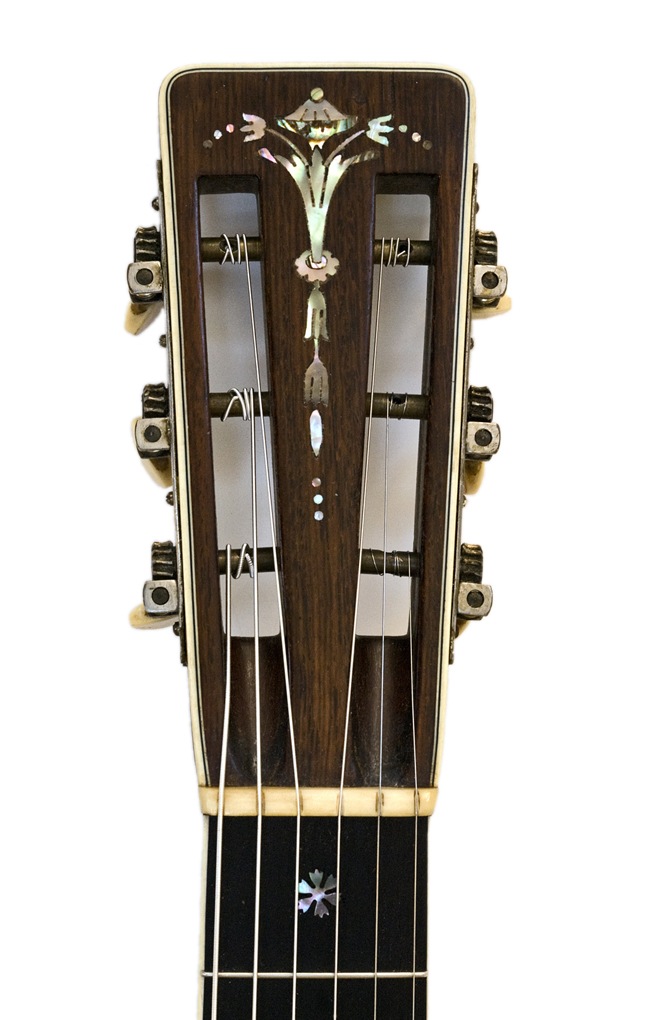
The torch was simplified and appeared in a more refined version from 1927 to 1933.
1930 Martin OM-45 DeLuxe
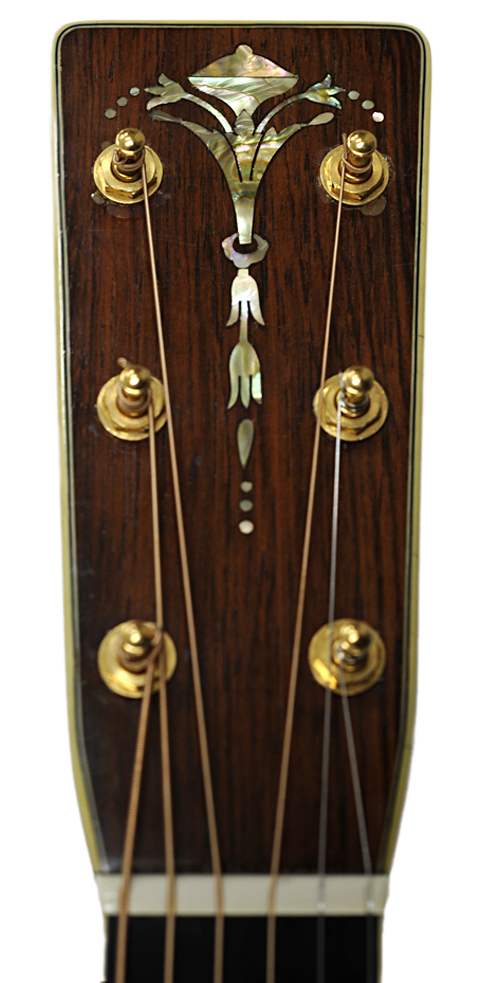
the Large Pearl MARTIN Headstock Logo
In 1931 the pearl Martin headstock logo first appeared on this first Martin archtop prototype:
1931 Martin C-1 Prototype:
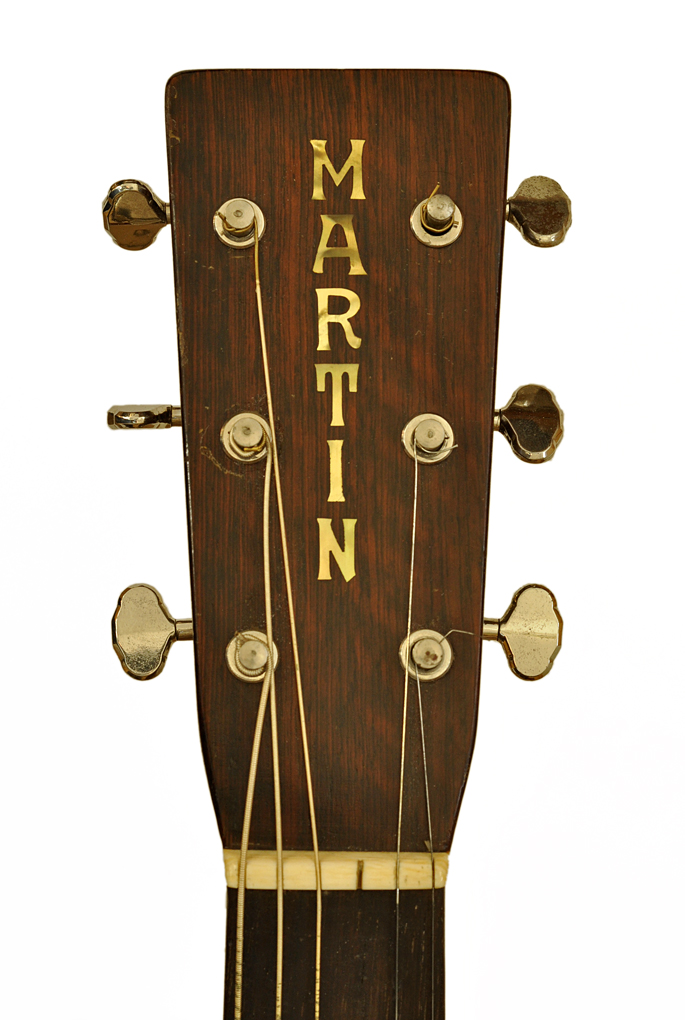
By the next year, Martin had added the "C" and "F" to the logo.
1932 C-2S 12 String
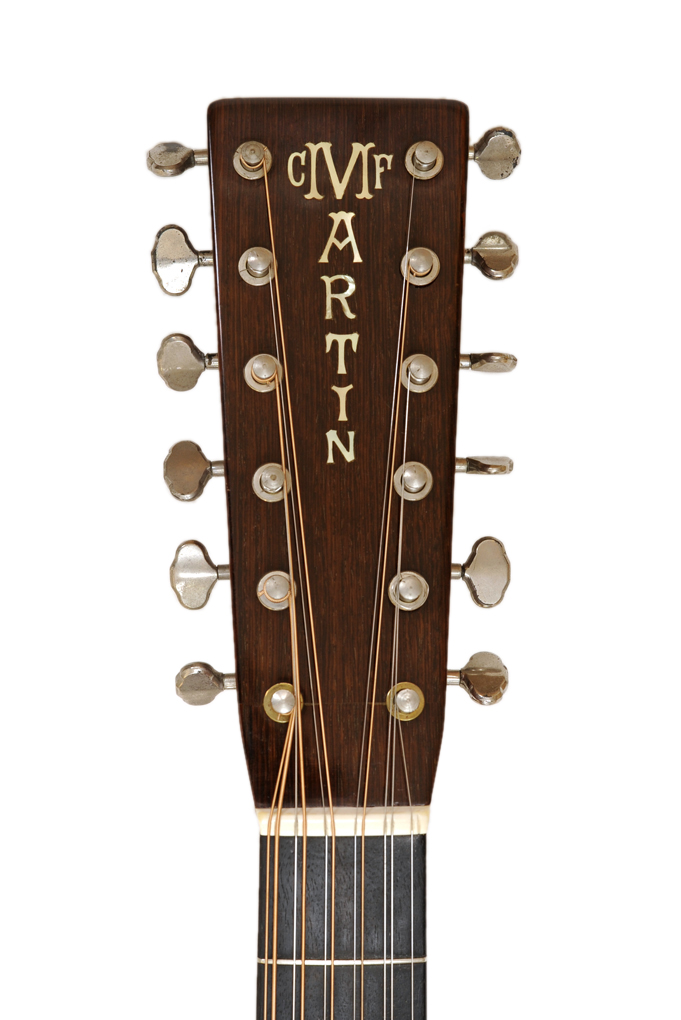
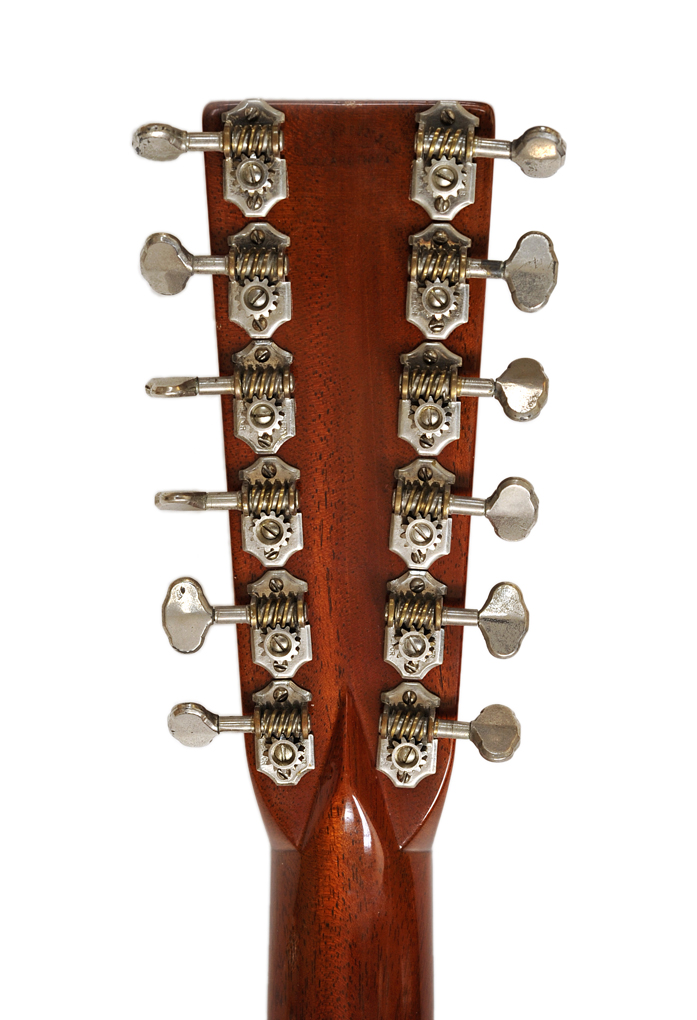
In 1933, in addition to appearing on archtops, the pearl Martin headstock logo also replaced the torch on Style 45 solid headstock Martins.
The torch still appeared on slotted headstock Martins and a few special order 14 fret guitars.
The torch was not produced by Martin, but was purchased from the George H. Jones Co. of New York.
Martin Headstock with Fiberloid tortoise shell color head veneer

1941 Martin 0-15 with Tortoise Headstock Veneer.
Beginning in 1938, a number of Martin guitars were built with a "Fiberloid" tortoise shell colored head veneer, starting with a sunburst top-of-the-line D-45 #71663 formerly owned by Don Teeter, and including a 1940 D-45 later sold by Bernie Leadon to the Japanese collector Mac Yasuda, and a third D-45 from 1941, as well as a small handful of others, reportedly including a D-28, a couple of 1939 D-18's and a 000-45.
By 1940, the tortoise head veneer appeared on the inexpensive budget model 0-15. It's interesting that a feature apparently desirable enough to be used on special order for the exclusive D-45 should soon find itself as a regular distinctive feature of Martin's cheapest and most plentiful guitar, but early plastics were pretty hot stuff!
I've seen several Ebay ads for 0-15 Martins with tortoise headstock veneers with words to the effect of: "Extremely rare, one of two or three ever seen."
I now have verification of tortoise veneer 0-15's from twenty two different batches, covering April, 1940 to March, 1943, and no 0-15's from the period with standard rosewood veneers.
The full production run was from March, 1940 to October, 1943.
The first batch was specified with "Fiberloid tortoise shell colored head veneer"
I think it's safe to say that tortoise Fiberloid was standard for the 0-15 from the first run in March, 1940 until at least March, 1943, which would mean at least 1,680 tortoise headstock 0-15's were made.
Tortoise Fiberloid headstock 0-15 sightings:
74696 from 4/40
74756 from 4/40
74796 from 4/40
74992 and
75003 from 5/40
75072 from 5/40
75228 from 6/40
75400 from 6/40
75862 from 8/40
76811 from 1/41
78413 from 7/41
78768 from 9/41
78872 from 9/41
79049 from 10/41
79190 and
79202 from 10/41
79839 and
79846 from 12/41
80064 from 1/42
80230 from 1/42
81219 from 3/42
81428 from 4/42
82238 from 8/42
82377 from 9/42
83631 from 3/43
85764 from 10/43 - rosewood veneer
Until recently we awaited any 0-15 sightings from guitars built from March to October, 1943, making it seem likely that tortoise was standard for the entire run of the Style 0-15 from 1940 to 1943.
We now know that 85764, from the very last batch of 0-15, stamped on October 1, 1943, lacked the tortoise veneer. Perhaps it was the end of supplies of tortoise for the veneer that prompted Martin to discontinue the 0-15.
The Martin Style 2-20 is one of several Mandolins also having a tortoise headstock veneer in 1940.
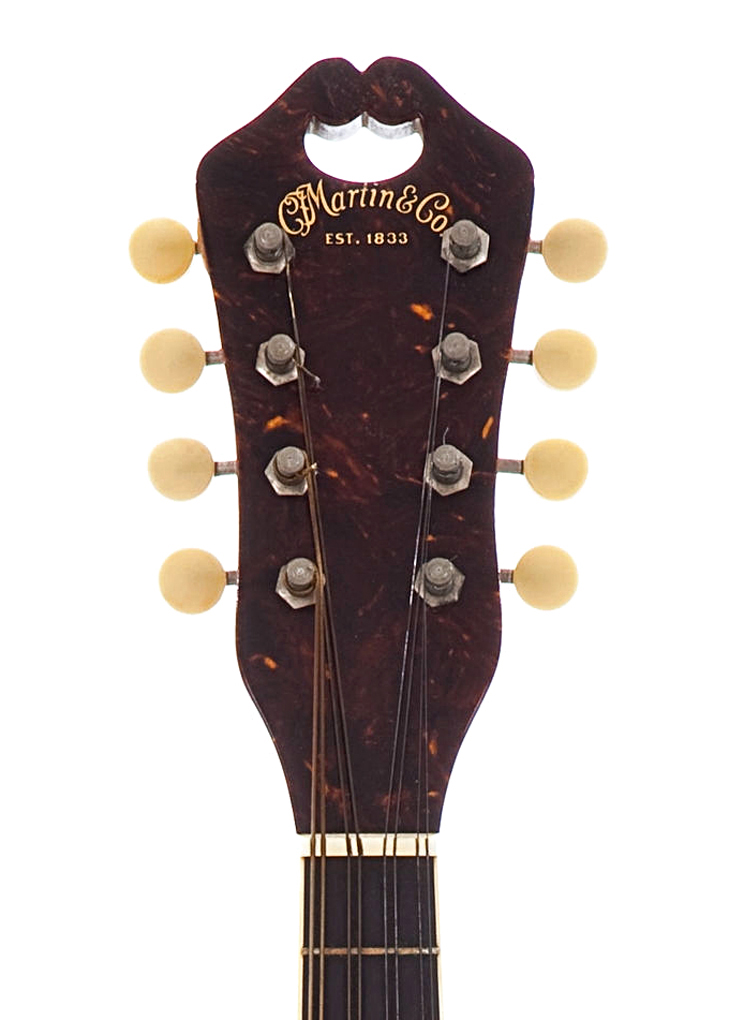
vintagemartin.com
To See Robert Corwin's Classic
Photography of Folk and Roots Musicians, visit: